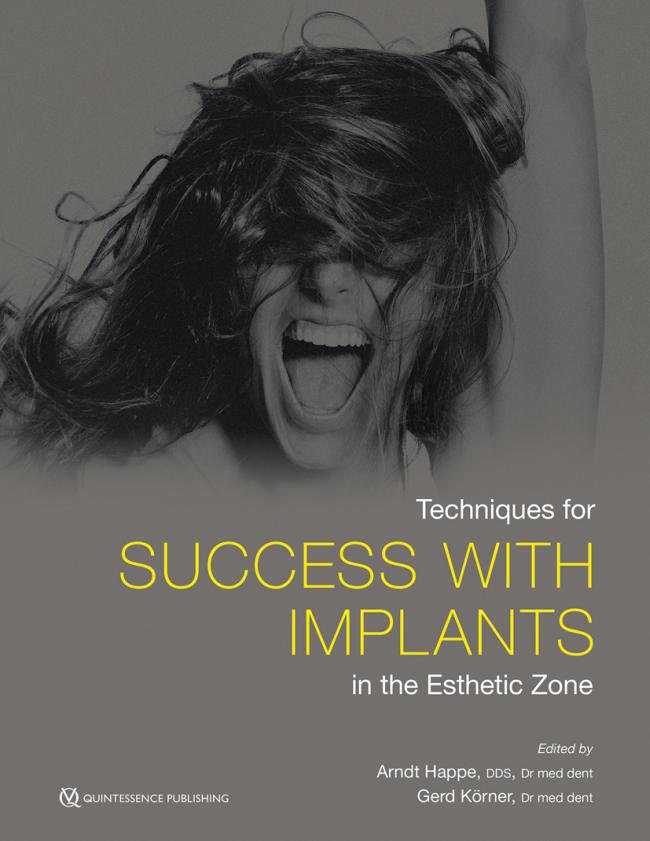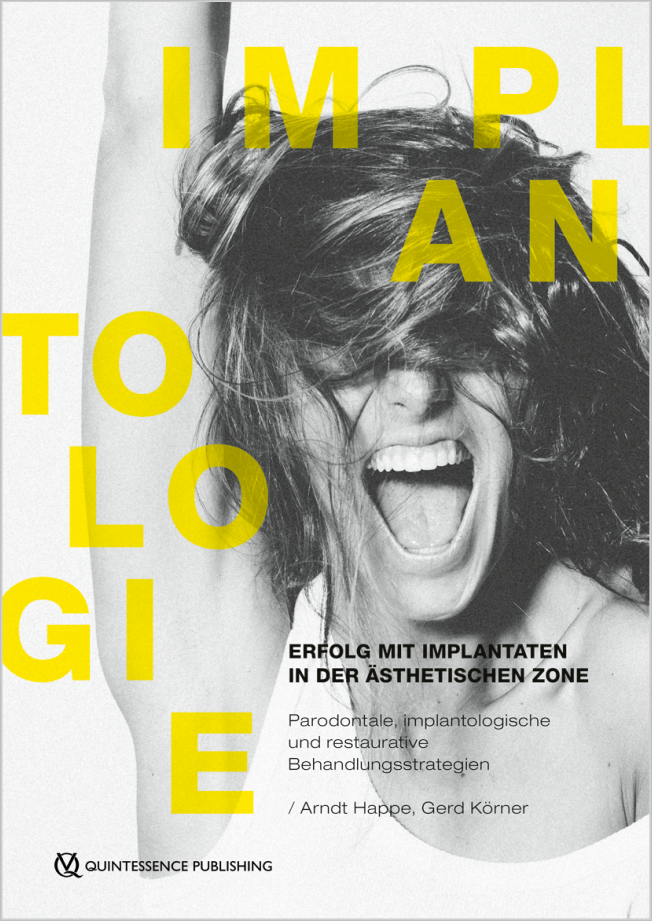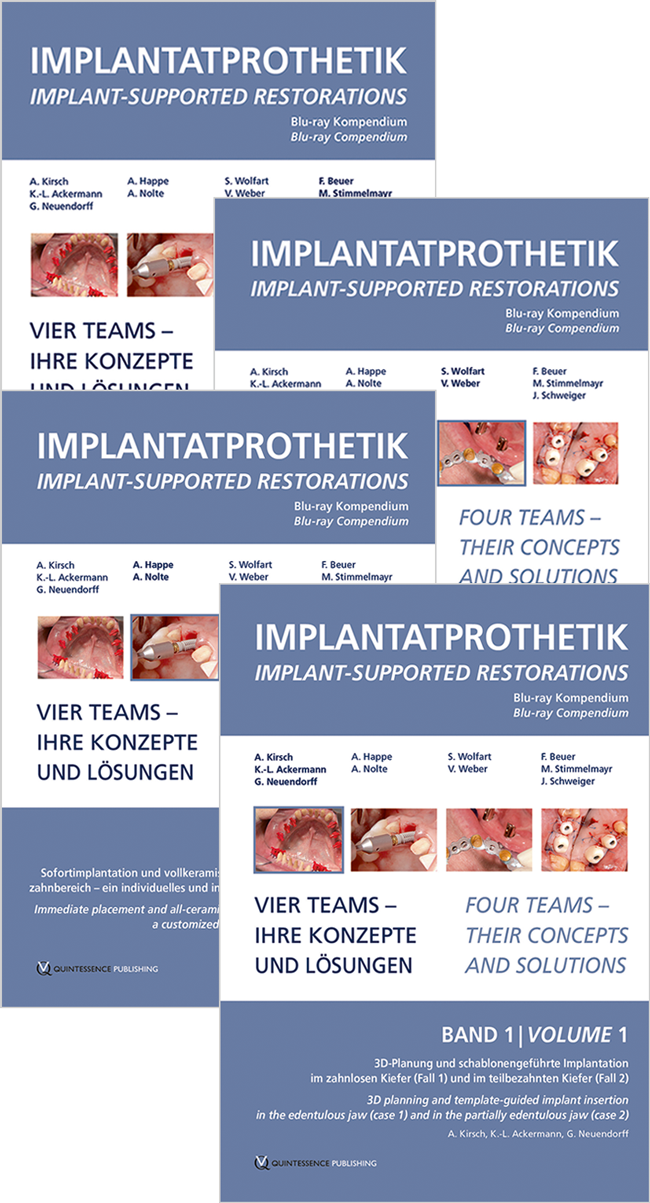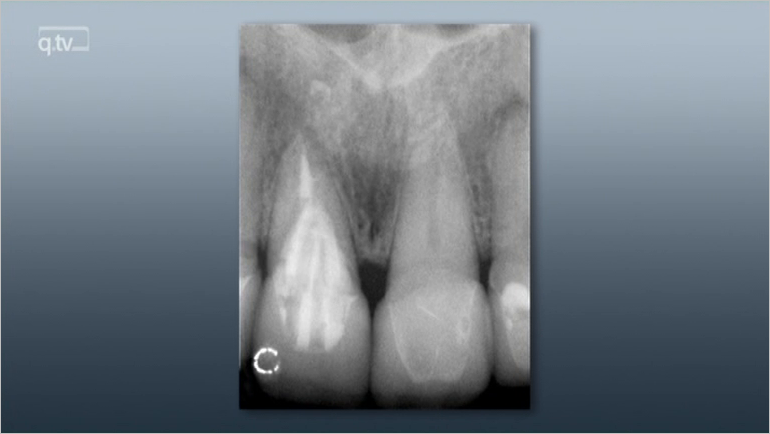The International Journal of Oral & Maxillofacial Implants, 2/2025
DOI: 10.11607/jomi.10574, ID de PubMed (PMID): 39485909Páginas 188-196, Idioma: InglésHenn, Paul / Gehrke, Peter / Happe, Arndt / Neugebauer, JörgPurpose: To conduct a retrospective study on the marginal bone level (MBL) of reduced diameter implants (RDIs) to analyze them in the context of various surgical and prosthetic treatment strategies using heterogeneous data from a private practice. Materials and Methods: A total of 123 patients were treated with 326 implants. Of those implants, 247 of them were RDIs, and the remaining 79 implants were standard-diameter implants (SDIs) as patient-related controls. The mean observation time was 24.4 months, and the maximum observation time 76.0 months. The peri-implant bone level of the implants was evaluated, while considering the diameter, time of implant placement, time of loading, extent of augmentation, and localization of the implants. The data were evaluated after restructuring using a mixed model analysis. Results: No significant difference was found between the use of RDIs or SDIs in the analyzed indications. Furthermore, no significant difference was found for the implant placement time, loading time, or the use of two-stage augmentations regarding the stability of the peri-implant bone level. Conclusions: Reduced-diameter implants are a sufficient treatment option in horizontally deficient bone conditions. The use of RDIs in the posterior region shows promising results; 3.5-mm- diameter implants may be indicated considering the individual patient situation. The use of a mixed model analysis for the evaluation of heterogeneous practice data can lead to a significant increase in the number of retrospective studies and data integration from practices, forming a sound basis for evidence-based dentistry.
Palabras clave: bone augmentation, dental implants, implant diameter, marginal bone level, mixed model analysis
Implantologie, 4/2023
Páginas 427-438, Idioma: AlemánHappe, Arndt / Blender, Sarah Maria / Maubach, Christina / Kuhn, Katharina / Luthardt, Ralph G.Multidisziplinärer TherapieansatzAuch wenn moderne digitale Verfahren zur Diagnostik, Planung und Umsetzung von Implantaten heute eine hohe Sicherheit und Genauigkeit liefern, kann es bei diesen Behandlungen zu ästhetischen Komplikationen kommen. Typische ästhetische Komplikationen sind Weichgeweberezessionen, insuffiziente Papillen und Verfärbungen bedingt durch Durchscheinphänomene. Diese sich zumeist als Weichgewebeproblematik manifestierenden Probleme können verschiedene Ursachen haben. Insuffiziente Implantatpositionen, unvollständige Augmentationen und chirurgische Komplikationen sind einige davon. Aber auch ungünstig gestaltete prothetische Komponenten können einen bedeutenden Einfluss haben. Der vorliegende Artikel zeigt zwei Fallbeispiele, die durch die Kombination von parodontalchirurgischen und implantatprothetischen Maßnahmen gelöst werden konnten.
Manuskripteingang: 09.08.2023, Annahme: 20.10.2023
Palabras clave: plastische Parodontalchirurgie, Bindegewebetransplantate, Implantatprothetik, Emergenzprofil
International Journal of Esthetic Dentistry (DE), 3/2023
The Last PagePáginas 326, Idioma: AlemánHappe, ArndtInternational Journal of Esthetic Dentistry (EN), 3/2023
The Last PageID de PubMed (PMID): 37462383Páginas 312, Idioma: InglésHappe, ArndtIn this section world-renowned dentists share a personal secret with us: Even the best sometimes make mistakes, and what makes them true experts is the capability to manage errors and complications. On The Last Page they present cases that normally no one would share.
QZ - Quintessenz Zahntechnik, 11/2023
ErfahrungsberichtPáginas 1076-1091, Idioma: AlemánHappe, Arndt / Holthaus, PascalEs gibt unterschiedliche Faktoren, die die Dimension und Position der periimplantären Weichgewebe beeinflussen. Der Beitrag beschreibt die wichtigsten Einflussfaktoren und zeigt anhand verschiedener Fallbeispiele, was bei der Herstellung der verschiedenen Suprakonstruktionen zu beachten ist.
Palabras clave: Suprakonstruktion, Implantat, Emergenzprofil, Weichgewebe, Implantatprothetik
Implantologie, 4/2022
Páginas 387-398, Idioma: AlemánHappe, Arndt / Debring, Leonie / Schmidt, Alexander / Fehmer, Vincent / Neugebauer, JörgEine randomisierte kontrollierte klinisch-volumetrische Studie Die Bindegewebetransplantation zählt heute zu den Standardverfahren zur Kompensation von Volumendefiziten bei Sofortimplantation. Neue Biomaterialien wie azelluläre Matrices könnten die Gewinnung autogenen Gewebes auf ein absolut notwendiges Minimum reduzieren und damit die Häufigkeit und das Ausmaß postoperativer Beschwerden verringern. Die vorliegende randomisierte Studie verglich die klinischen Therapieergebnisse von Sofortimplantationen in der Oberkieferfront, bei denen sowohl eine knöcherne Augmentation als auch eine Weichgewebeverdickung durchgeführt wurde. Neben anorganischem bovinem Knochenmaterial (ABBM) kam entweder ein Bindegewebeersatz aus porciner Dermis, eine azelluläre dermale Matrix (ADM) oder ein autogenes Bindegewebetransplantat (BGT) zum Einsatz. An der Studie nahmen 20 Patienten (11 Männer, 9 Frauen) mit einem Durchschnittsalter von 48,9 Jahren (21−72 Jahre) teil. Die Zuordnung der Studienteilnehmer zu der Test- (ADM) bzw. Kontrollgruppe (BGT) geschah nach dem Zufallsprinzip. Der Zahnextraktion folgte die sofortige Implantatinsertion. Der bukkale Knochen wurde mit ABBM augmentiert. Eine ADM oder ein BGT diente zur Verdickung des bukkalen Weichgewebes und somit zur Kompensation des erwarteten Verlustes von bukkalem Volumen. Die klinische und volumetrische Nachuntersuchung fand 12 Monate nach Implantatinsertion statt. Bei allen Implantaten hatte eine Osseointegration stattgefunden und die prothetische Versorgung befand sich in situ. Ein Jahr postoperativ betrug die durchschnittliche, linear gemessene Volumenveränderung −0,55 ± 0,32 mm (ADM) bzw. −0,60 ± 0,49 mm (BGT). Patienten der ADM-Gruppe beklagten signifikant weniger postoperative Beschwerden. Bei Sofortimplantation mit Augmentation von Hart- und Weichgewebe führten Ersatzmaterialien und autogene Bindegewebetransplantate zu ähnlichen klinischen Ergebnissen hinsichtlich der gemessenen Volumenveränderungen. Die Anwendung von Ersatzmaterial führte zu signifikant weniger postoperativer Morbidität.
Manuskripteingang: 07.01.2021, Annahme: 14.04.2021
Palabras clave: Sofortimplantation, Weichgewebeverdickung, Bindegewebetransplantat, azelluläre dermale Matrix, anorganisches bovines Knochenmaterial
Implantologie, 3/2022
Páginas 275-288, Idioma: AlemánHappe, Arndt / Blender, Sarah Maria / Luthardt, RalphKlinisches Vorgehen anhand von Fallbeispielen Implantatgetragene Provisorien können bei verschiedenen implantologischen Behandlungen einen wichtigen Beitrag zum Behandlungserfolg leisten. Während die Sofortimplantation mit sofortiger Eingliederung eines Provisoriums die Chance bietet, das natürliche Emergenzprofil zu erhalten, muss bei einer klassischen Implantation mit submuköser Einheilung das Emergenzprofil neu entwickelt werden. Gerade komplexe Rekonstruktionen von Hart- und Weichgewebe im Frontzahnbereich erfordern häufig das Eingliedern eines Langzeitprovisoriums, da der Alveolarfortsatz nach augmentativen Maßnahmen noch Umbauprozessen unterworfen ist, die mit Volumenveränderungen einhergehen können. Eine provisorische Versorgung überbrückt den Zeitraum, in dem noch signifikante dynamische Gewebeveränderungen stattfinden. Gleichzeitig können das Weichgewebe anatomisch ausgeformt und die Ästhetik getestet werden. Der Artikel stellt verschiedene Fälle vor und beschreibt das klinische Vorgehen vor dem Hintergrund der wissenschaftlichen Literatur.
Manuskripteingang: 18.07.2022, Annahme: 31.08.2022
Palabras clave: Implantatprothetik, Provisorium, Sofortimplantation, Sofortversorgung, Emergenzprofil, Weichgewebeausformung
International Journal of Periodontics & Restorative Dentistry, 3/2022
DOI: 10.11607/prd.5632Páginas 381-390, Idioma: InglésHappe, Arndt / Debring, Leonie / Schmidt, Alexander / Fehmer, Vincent / Neugebauer, JörgConnective tissue grafts have become a standard for compensating horizontal volume loss in immediate implant placement. The use of new biomaterials like acellular matrices may avoid the need to harvest autogenous grafts, yielding less postoperative morbidity. This randomized comparative study evaluated the clinical outcomes following extraction and immediate implant placement in conjunction with anorganic bovine bone mineral (ABBM) and the use of a porcine acellular dermal matrix (ADM) vs an autogenous connective tissue graft (CTG) in the anterior maxilla. Twenty patients (11 men, 9 women) with a mean age of 48.9 years (range: 21 to 72 years) were included in the study and randomly assigned to either the test (ADM) or control (CTG) group. They underwent tooth extraction and immediate implant placement together with ABBM for socket grafting and either ADM or CTG for soft tissue augmentation. Twelve months after implant placement, the cases were evaluated clinically and volumetrically. All implants achieved osseointegration and were restored. The average horizontal change of the ridge dimension at 1 year postsurgery was -0.55 ± 0.32 mm for the ADM group and -0.60 ± 0.49 mm for the CTG group. Patients of the ADM group reported significantly less postoperative pain. Using xenografts for hard and soft tissue augmentation in conjunction with immediate implant placement showed no difference in the volume change in comparison to an autogenous soft tissue graft, and showed significantly less postoperative morbidity.
QZ - Quintessenz Zahntechnik, 10/2022
Exzellente Dentale ÄsthetikPáginas 1009-1010, Idioma: AlemánHolthaus, Pascal / Burghardt, Susanne / Happe, ArndtInternational Journal of Computerized Dentistry, 1/2022
ScienceID de PubMed (PMID): 35322651Páginas 37-45, Idioma: Inglés, AlemánHappe, Arndt / von Glasser, Gerrit Schulze / Neugebauer, Jörg / Strick, Kilian / Smeets, Ralf / Rutkowski, RicoAim: To evaluate the survival of implant-retained restorations fabricated on CAD/CAM-derived zirconia abutments luted to a titanium base.
Materials and methods: 153 patients who received a total of 310 dental implants (Camlog Promote plus or Xive S) and all-ceramic restorations on yttria-stabilized tetragonal zirconia polycrystal (3Y-TZP) abutments luted to a titanium base during the last 10 years were included. Patients were examined for technical complications during routine visits. Crestal bone level changes were randomly analyzed based on periapical radiographs of 75 implants.
Results: Among the included 153 patients, 17 ceramic chippings (5.5%), 6 abutment loosenings (1.9%), and 2 abutment fractures (0.6%) were identified. The mean follow-up time was 4.7 years (standard deviation [SD]: 1.94), with a follow-up period of up to 10 years (maximum). Kaplan-Meier estimation resulted in a survival rate without complications of 91.6% for the restoration and 97.4% for the abutment. There was no statistically significant difference between the two implant systems, either between implant location or regarding the complication rate of the type of restoration. For the 75 implants included in the radiographic analysis, the mean bone level change was 0.384 mm (SD: 0.242, 95% CI: 0.315 to 0.452) for the Camlog implant system and 0.585 mm (SD: 0.366, 95% CI: 0.434 to 0.736) for the Xive system (P = 0.007).
Conclusion: The results of the present retrospective study demonstrate acceptable clinical outcomes for zirconia abutments luted to a titanium base in combination with all-ceramic restorations. The assessed abutment design does not appear to have a negative impact on peri-implant hard tissue.
Palabras clave: implant abutment, zirconia abutment, titanium base, two-piece abutment, implant restoration












